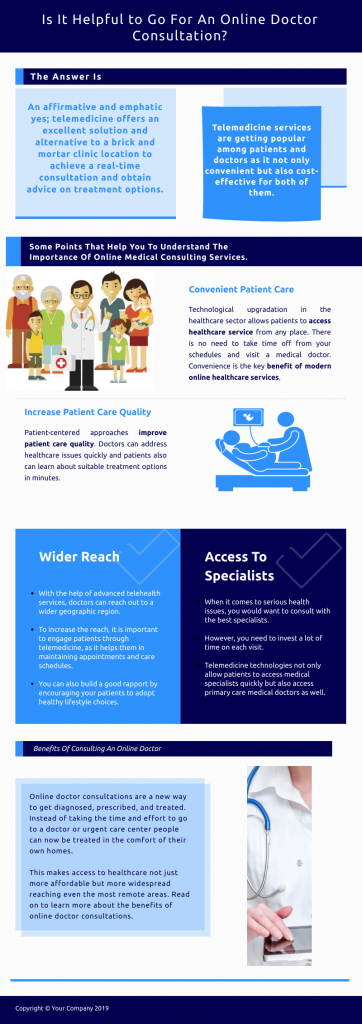Telemedicine In The World. What Distance Treatment Looks Like?

Telemedicine is sometimes referred to as “distance treatment”. It is difficult to disagree with this – by definition, it is the provision of medical services without the need for physical contact with the patient through the use of the latest technologies and mobile devices. Telehealth the world enables remote diagnostics, treatment, and prevention. Let’s know about this treatment on reliefseeker
What is telemedicine?
The term telemedicine in the simplest terms means medicine at a distance. According to the definition, it is a form of providing medical services using the latest technologies, especially telecommunications and IT. Thanks to them, it is possible to transfer data and exchange specialist information for diagnostic, therapeutic and preventive purposes. To put it simply – the doctor can monitor the health of his patient without having to visit the office.
It should also be remembered that telemedicine the world is not only a great convenience for patients but also the entire medical team, thanks to which it significantly changes the form of work of doctors, nurses and other specialists. Thanks to telemedicine, they can send test results among themselves (e.g. ECG, USG, computed tomography, magnetic resonance imaging), conduct remote operations, organize video conferences, as well as consult specific cases with researchers in other countries. This approach increases the accuracy of diagnoses and the effectiveness of selected treatment methods.
Telemedicine – history
The history of telemedicine begins in the USA in the 1960s. It was there that the satellite telecommunications network was created, which connected American military bases located on all continents with specialized medical centres in the home country. It is thanks to the army that modern technologies and devices have developed that today enable distance treatment.
Speaking of the history of telemedicine, you can’t forget about NASA and its space flight program. Because the health of astronauts had to be monitored remotely, there was a need to develop technologies and devices that made it possible. Many of them are now available for general use.
Telemedicine began to develop in 2001 since the Telemedicine Section of the Medical Association was established. Professors, hospital directors and eminent specialists in every field of medicine began to take all possible actions to develop the idea of telemedicine. Their success was conducting an interactive video conference on heart surgery, which took place at the Children’s Health Center in Warsaw. On the other hand, the Telemedicine Working Group has been operating since 2015, and since 2016 the provision of distance medical advice has been regulated by law (amendment to the Act of December 5, 1996, on the professions of doctor and dentist,
What does telemedicine cover?
Telemedicine aims to facilitate access to specialist medical care and improve its quality, despite the problems that are currently encountered in the healthcare system. Doctors can consult, diagnose, treat and monitor their patients (e.g. health status or effects of treatment) without having to visit an outpatient or hospital. Thanks to telemedicine, immediate action in life-threatening situations is also possible.
Telemedicine is primarily:
- e-referrals , e-prescriptions , e-releases ;
- specialist consultations;
- periodic health check and checks;
- monitoring the effects of the treatment used;
- monitoring the health status of patients who require long-term treatment;
- monitoring the state of health of patients suffering from chronic diseases;
- conducting preventive actions on a large scale;
- consultation of difficult cases with specialists from around the world;
- remote assistance in difficult medical cases;
- education of doctors and nurses through distance participation in various types of conferences;
- telecare.
Telemedicine – devices for distance treatment
Devices used in telemedicine include
- telemedicine bands ;
- homemade KTG;
- home ECG holders;
- ECG monitors.
These devices can be connected to a 24-hour care system, where members of the medical team monitor data from them on an ongoing basis, and in the event of irregularities are contacted with the patient or provide relevant information to relevant services. Another option is to save the test results in an application on your smartphone and send them to your attending physician, who will decide on what to do next.
Telemedicine devices allow patients to perform the necessary specialist tests at any time, without having to wait in a queue. Also, the patient can independently and regularly monitor his health, which is of great importance for the prevention of many chronic diseases.
Telemedicine in emergency medicine
Telemedicine in emergency medical services is primarily an opportunity to inform the relevant services about the threat to life through a band with the SOS button or a telemedicine centre providing telecare over a given patient. Such action significantly increases the safety of patients (especially those who are dependent or deprived of round-the-clock care of relatives) and can affect survival in some diseases (e.g. heart attack).
Telemedicine in emergency medical services is also an extensive communication system between various specialist centres, which enables immediate transmission of diagnostic data and information. Thanks to this, support is obtained in urgent and difficult cases as well as in all kinds of crises.
Also, ambulances are equipped with defibrillators connected to the computer in the hemodynamics laboratory (this is the so-called Medical Receiving Station). Rescuers perform an ECG test on the patient, and its result is automatically transmitted to the MSO, where it is analyzed by a cardiologist and decides on further action. Currently, 45 MSO operates around the clock.








